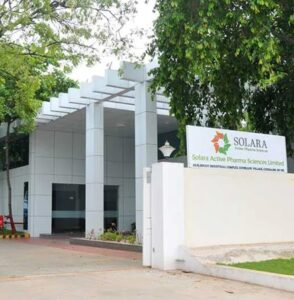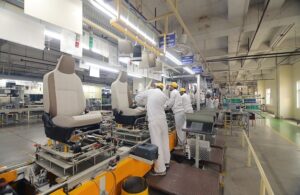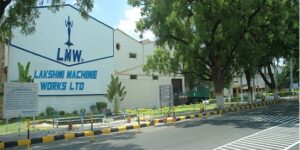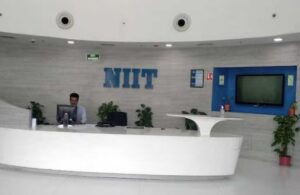1. At a Glance
Lakshmi Machine Works Ltd (LMW) is that rare Coimbatore legend that built its empire on yarn and now tries to flirt with aerospace precision machining without dropping a single spindle. With amarket cap of ₹16,857 croreand acurrent price of ₹15,779, it sits in the elite club of “almost debt-free” old-school industrials that refuse to die—or digitalize quietly.
InQ2FY26 (ended September 2025), LMW delivered consolidatedrevenue of ₹822 crore, up6.88% YoY, andPAT of ₹40.9 crore, up a spicy67% YoY—a rare sight in India’s textile machinery hall of fame. But here’s the kicker: thestock trades at a P/E of 140,EV/EBITDA of 52.4, and aprice-to-book of 5.96x—numbers so high even the CNC machines at LMW must be blushing.
The company flauntszero debt, acurrent ratio of 2.47, and aROE of 3.04%, which is roughly the excitement level of a GST audit. Still, the promise of IoT-enabled spindles, aerospace contracts, and global exports (16% of FY24 revenue) keeps investors hypnotized.
LMW has quietly evolved into a manufacturing powerhouse with four divisions:Textile Machinery,Machine Tools,Foundry, andAdvanced Technology Centre (ATC)—each operating at varying levels of enthusiasm and utilisation (ranging from 45% to 70%).
So, is LMW still India’s spinning crown jewel or just a nostalgic textile veteran flirting with Industry 4.0 buzzwords? Let’s find out.
2. Introduction
If Coimbatore had a Hogwarts, Lakshmi Machine Works would be its Gryffindor—a proud old institution with massive legacy, secret vaults of engineering blueprints, and an alumni list that runs India’s textile mills. Founded in the 1960s, LMW was once synonymous with spinning machinery. Today, it’s more like your uncle who upgraded his Nokia to an iPhone but still uses it to make calls only.
LMW’s legacy division—Textile Machinery (TMD)—still spins 73.6% of total revenue. But the company has been trying to reinvent itself. It now buildsCNC machines (MTD),aerospace components (ATC), andprecision castings (FDY)—basically, everything from your T-shirt thread to parts that help satellites not crash.
In FY24, LMW’s consolidated revenue stood at ₹3,086 crore, down from ₹4,696 crore in FY23—a 34% hangover. The company blamed muted demand, global slowdown, and its own overdependence on the textile sector. Still, it managed to post aPAT of ₹120 crore(FY25 TTM) with anet margin of just 2.76%.
Yet, despite the flat growth, the company’sR&D spend of 2.2% of revenueandcapex of 15.5% of revenueshow it isn’t resting. It’s building smart machines, IoT-enabled spindles, and precision aerospace parts—hoping to impress both ISRO and the stock market.
But let’s be honest—when yourP/E is 140and yourROE is 3%, you’re not an investment story, you’re a philosophical one.
3. Business Model – WTF Do They Even Do?
LMW has diversified into four divisions, and each has its own vibe:
1. Textile Machinery Division (TMD)– The OG of LMW. Makes spinning machines that convert cotton into yarn. Units sold in FY24:4,455. Currently running at45–50% capacity utilisation. Still commands loyalty from Indian mills who swear by “Coimbatore ka quality.”
2. Machine Tool Division (MTD)– Makes CNC turning and machining centres. Units sold:3,684in FY24. Utilisation:70%. Competes with Jyoti CNC and Ace Micromatic. Focus: high precision, digital controls, and automation. Reality: still a long queue of engineers running manual checks.
3. Foundry
Division (FDY)– Castings and heavy parts for internal use and select exports. Volume:5,022 tonnes. Capacity utilisation:70%. The foundry is basically the quiet sibling who never complains but carries everyone’s load.
4. Advanced Technology Centre (ATC)– The cool kid. Makes aerospace components and composite parts. Delivered parts toISROand global aerospace OEMs. Revenue share:3.4%. It’s small but gives LMW the swagger of a tech company at cocktail parties.
LMW’s model is deceptively simple: design precision machines, make them in-house, fund R&D from cash flows, and export the result to countries still impressed by “Made in Coimbatore.”
Domestic revenue still dominates at84%, with exports contributing16%.
So, while half of the world talks AI, LMW’s AI stands for “Automatic Inverter.” But hey, it’s still one of India’s best engineering brands.
4. Financials Overview
| Metric | Q2FY26 | Q2FY25 | Q1FY26 | YoY % | QoQ % |
|---|---|---|---|---|---|
| Revenue (₹ Cr) | 822 | 769 | 694 | 6.9% | 18.4% |
| EBITDA (₹ Cr) | 44 | 32 | 14 | 37.5% | 214.3% |
| PAT (₹ Cr) | 40.9 | 24 | 11 | 70.4% | 271.8% |
| EPS (₹) | 38.3 | 22.9 | 10.7 | 67.3% | 258.9% |
Annualised EPS:₹38.3 × 4 = ₹153.2
P/E (based on CMP ₹15,779):~103x
Yes, triple digits. Even ChatGPT couldn’t justify that.
Commentary:LMW’s quarterly growth looks solid, but when your PAT margin is just5%, every crore looks like hard labour. QoQ recovery is good, but it’s like watching a turtle climb a slope—it’s moving, but at what cost?
5. Valuation Discussion – Fair Value Range
Let’s calculate calmly before emotions take over:
a) P/E Method:Annualised EPS = ₹153.2Industry P/E (Industrial Manufacturing peers) ≈ 35x→ Fair Value = 153.2 × 35 =₹5,362per share
b) EV/EBITDA Method:EV = ₹15,448 CrEBITDA (FY25 TTM) = ₹152 Cr→ EV/EBITDA = 101.6x currently (overvalued much?)Industry average ≈ 20xFair EV = 152 × 20 = ₹3,040 Cr → Implied equity value ≈ ₹3,400 Cr →Fair Price ≈ ₹3,200–₹3,600
c) Simplified DCF (10% discount rate, 5% growth, base FCF ₹150 Cr):Intrinsic Value ≈ ₹5,000–₹6,000
Fair Value Range (Educational): ₹3,200 – ₹6,000
⚠️Disclaimer: This fair value range is for educational purposes

















